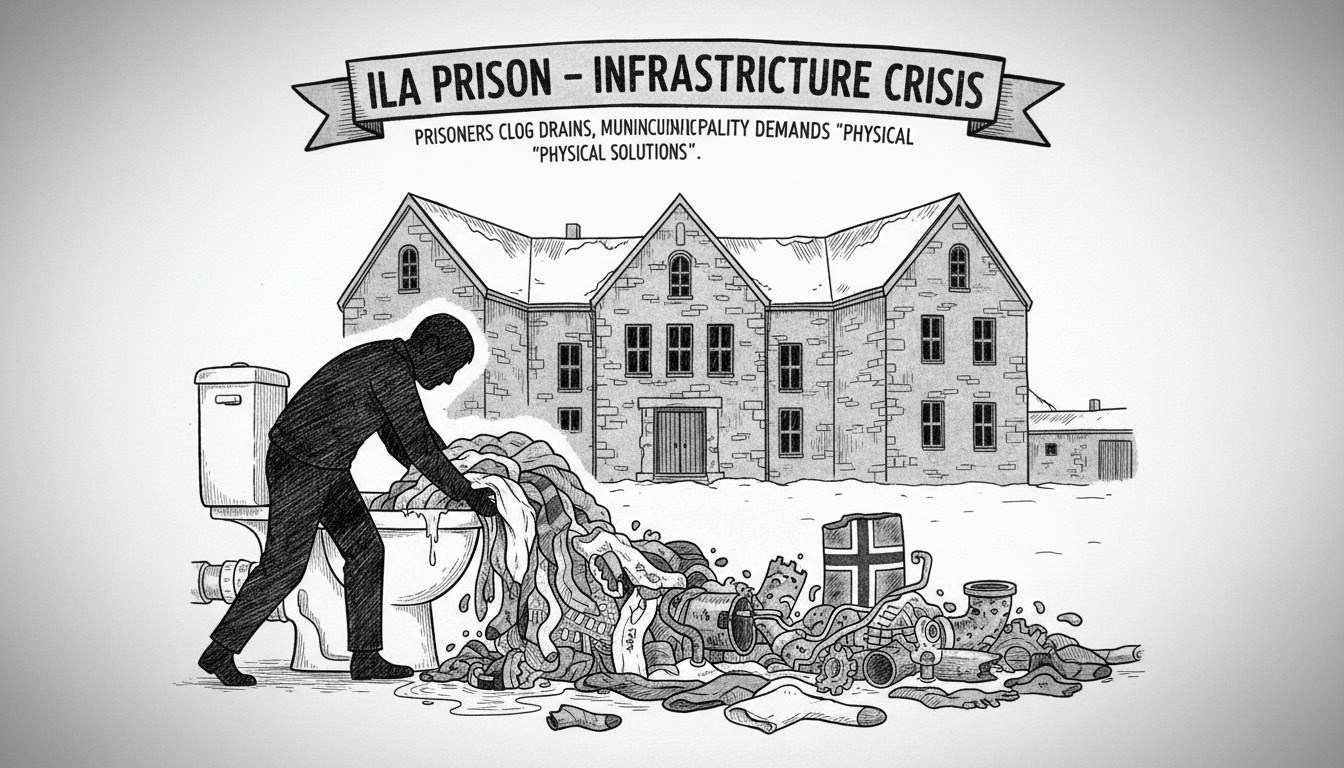Inmates at Ila Prison near Oslo repeatedly flush clothing and textiles down their toilets. This creates serious problems for the municipal sewage system. Prisoners discard jogging pants, towels, and bed sheets directly into toilet bowls.
The local municipality documented clear evidence linking these textiles to Ila Prison. Sewage pumps at municipal stations frequently fail when textiles jam the mechanisms. Local authorities sent an official letter to prison management detailing the issue.
Parties have discussed this problem for an extended period. The municipality now requires the prison to implement permanent physical solutions. These measures must prevent future textile disposal through prison plumbing systems.
Prison director Tonje Sandal confirmed they collaborate with government construction authorities. Their joint efforts aim to develop lasting solutions for the sewage challenges.
This situation highlights broader issues within Norwegian correctional facilities. Prison infrastructure often struggles with inmate behavior that damages systems. Similar incidents occurred at other Norwegian prisons in recent years.
The problem carries significant financial implications for taxpayers. Municipal sewage repairs require substantial public funding. Repeated equipment failures increase maintenance costs for local communities.
Norwegian prisons face ongoing challenges balancing inmate rights with practical facility management. While prisoners deserve decent conditions, destructive behaviors create public expenses. This case demonstrates how individual actions within institutions can impact broader public infrastructure.
International readers might find this situation particularly interesting given Norway's progressive prison reputation. The country typically emphasizes rehabilitation over punishment. Yet even modern facilities encounter practical operational difficulties.
The required physical modifications will likely involve toilet design changes or drainage improvements. Such infrastructure updates represent additional public spending on correctional facilities.
What motivates prisoners to flush clothing remains unclear. Some experts suggest such behavior might reflect protest or frustration. Others indicate it could stem from limited laundry options or simple vandalism.
The municipality's formal requirement signals escalating frustration with repeated incidents. Local authorities appear determined to shift responsibility and costs back to the prison system.
This case illustrates how municipal services interconnect with national institutions. Local taxpayers ultimately bear costs when state facilities create infrastructure problems. The resolution will test coordination between different government levels.
Norwegian correctional services continue working to improve prison conditions nationwide. This incident shows practical challenges persist despite the country's advanced penal philosophy.

